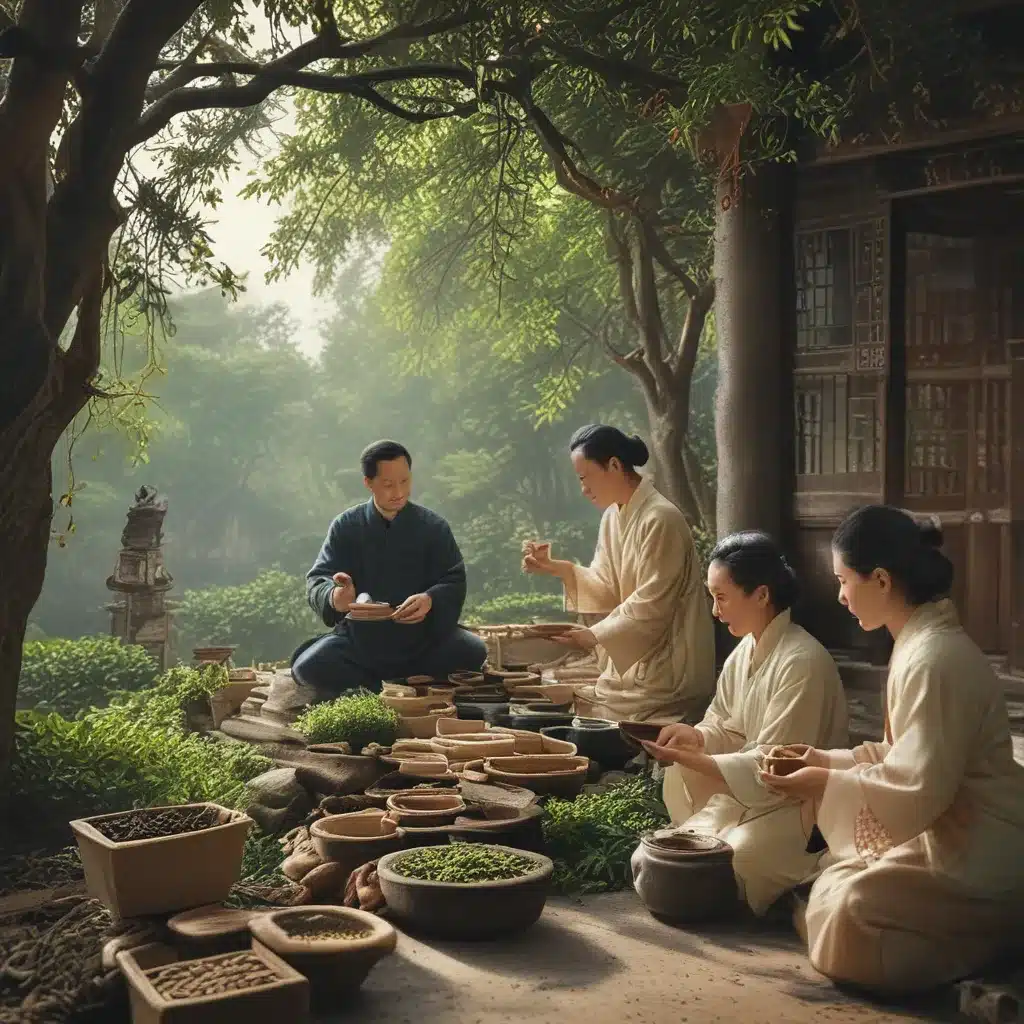
From the bustling streets of Shanghai, where the aroma of sizzling dumplings and fragrant spices permeates the air, emerges a lesser-known but equally captivating story – the rich and ancient heritage of tea in this dynamic city. As I stroll through the winding alleyways, I can’t help but be drawn into the captivating world of this humble yet profound beverage that has shaped the very fabric of Shanghai’s culture.
Uncovering Shanghai’s Tea Roots
Let’s begin our journey by stepping back in time, where the story of tea in Shanghai dates back centuries. The city’s proximity to the Yangtze River Delta, a verdant region renowned for its lush tea plantations, has long made it a hub for the cultivation, processing, and trade of this revered leaf. Historians recount how early tea merchants would ply the waterways, transporting their prized cargo to the bustling markets of Shanghai, where it would be eagerly snapped up by discerning palates.
But the story of tea in Shanghai extends far beyond its commercial significance. It has become deeply woven into the city’s cultural fabric, with tea houses and ceremonies playing a central role in the daily lives of its residents. As I wander through the city’s historic neighborhoods, I’m struck by the reverence with which Shanghainese approach the art of tea drinking. In dimly lit teahouses, patrons engage in a mesmerizing dance, meticulously preparing their leaves, carefully controlling the water temperature, and savoring each sip with a sense of ritual and contemplation.
The Art of Shanghai Tea Preparation
One of the most captivating aspects of Shanghai’s tea culture is the sheer diversity of preparation methods, each with its own unique set of traditions and nuances. At the One Dragon Restaurant, I’m introduced to the intricate art of Gongfu tea brewing, a technique that originated in the nearby Fujian province but has been masterfully adapted by Shanghainese tea enthusiasts.
As I watch the skilled tea master, their movements are fluid and deliberate, each step choreographed with the precision of a seasoned dancer. They delicately rinse the delicate porcelain cups, meticulously measure the leaves, and carefully control the water temperature, all the while engaging in a captivating ritual that seems to transcend the mundane act of brewing a cup of tea.
But the art of tea preparation in Shanghai extends far beyond Gongfu. In the city’s historic tea houses, I’ve witnessed the elegant and graceful Longjing tea ceremony, where the leaves are carefully pan-fired to bring out their distinct nutty aroma and velvety texture. And in the bustling street markets, I’ve stumbled upon vendors offering a more casual, yet no less reverent, approach to tea, serving up steaming cups of fragrant Pu-erh, its earthy notes mingling with the cacophony of the surrounding sights and sounds.
The Diverse Flavors of Shanghai Tea
As I delve deeper into Shanghai’s tea culture, I’m struck by the sheer diversity of flavors and styles that this city has to offer. From the delicate and floral Biluochun, harvested from the lush hills surrounding the city, to the robust and smoky Lapsang Souchong, its leaves meticulously smoked over pine fires, the range of teas available in Shanghai is truly awe-inspiring.
But it’s not just the terroir and processing methods that contribute to the city’s remarkable tea heritage. The Shanghainese have also developed a unique approach to blending and infusing their teas, creating truly one-of-a-kind flavor profiles. I recall a particularly memorable visit to a specialty tea shop, where I was introduced to a captivating concoction of Jasmine tea and dried osmanthus flowers, its floral notes dancing across my palate in a symphony of delicate sweetness.
| Tea Variety | Flavor Profile | Preparation Method |
|---|---|---|
| Biluochun | Delicate, floral | Pan-fired |
| Lapsang Souchong | Robust, smoky | Smoked over pine fires |
| Jasmine and Osmanthus | Floral, sweet | Blended and infused |
The Convergence of Tea and Cuisine
But the influence of tea in Shanghai extends far beyond the confines of the teahouse. It has become inextricably woven into the city’s culinary landscape, with chefs and mixologists incorporating this versatile ingredient into their creations in innovative and delightful ways.
Take, for instance, the rise of tea-infused cocktails, a trend that has taken the city’s bar scene by storm. I’ve sipped on delightful concoctions where the earthy notes of Pu-erh mingle with the brightness of citrus, or where the floral essence of Jasmine tea lends its subtle sweetness to a gin-based libation. And in the kitchens of the city’s finest restaurants, chefs are pushing the boundaries of tea-infused cuisine, using it to marinate meats, steep broths, and even as a key component in decadent desserts.
Preserving the Legacy
As I reflect on my journey through Shanghai’s tea culture, I’m struck by the profound sense of reverence and respect that the city’s residents have for this ancient beverage. It’s not just a drink, but a living, breathing tradition that has been carefully nurtured and passed down through generations.
And yet, in the face of rapid modernization and the homogenizing effects of globalization, there are concerns that this legacy may be under threat. Much like the Cinco de Mayo celebrations that have been co-opted and diluted over time, there are fears that the true essence of Shanghai’s tea culture could be lost amidst the push for progress.
But here, in this vibrant city, I see glimmers of hope. The rise of specialty tea shops, the preservation of historic teahouses, and the growing appreciation for artisanal tea preparation methods all suggest that the Shanghainese are fiercely committed to safeguarding their tea heritage. And as I sip my Longjing tea, gazing out at the neon-lit skyline, I can’t help but feel a sense of optimism – that the rich tapestry of Shanghai’s tea culture will continue to be woven, thread by thread, into the fabric of this ever-evolving city.






